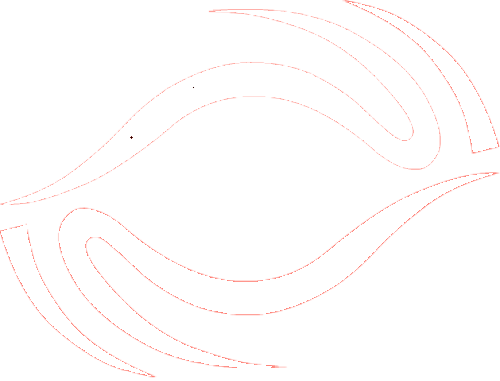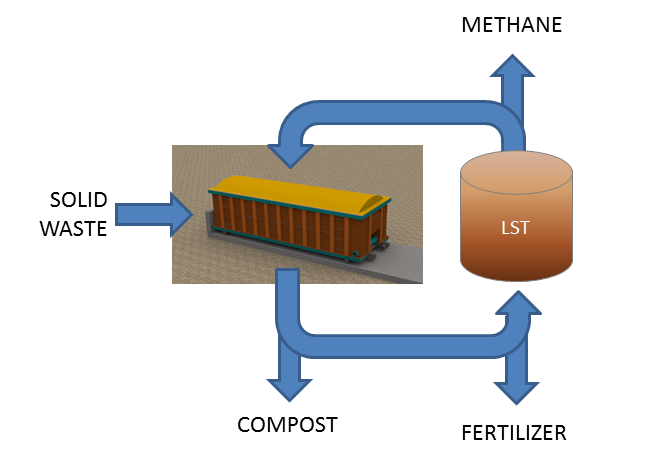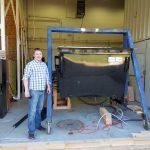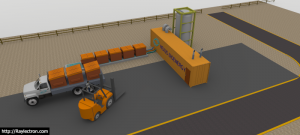Nexus's Modular Bio1 process is made possible by the Membrane Hydrolysis Reactor technology developed at Dr Sybil Sharvelle's laboratory at Colorado State University.
DRAWBACKS TO CONVENTIONAL ANAEROBIC DIGESTION
Anaerobic digestion involves the action of bacteria to breakdown organic material in successive stages to generate methane gas. A conventional digester operates in a wet slurry mode with 10-20% solids to prevent accumulation of intermediate organic acids that are inhibitory to methanogenic bacteria. A typical digester will generate 1000 gallons of water for every ton of solid waste processed and this is evident in design of a conventional AD system that consists of tanks and lagoons to manage these enormous quantities. This basic process has remained unchanged and accounts for the poor economic performance of many anaerobic digestors.
THE NEXUS INNOVATION
The Nexus Bio1 process represents a breakthrough in anaerobic digestion that can process waste with 60-80% solids while minimizing wastewater production. The Bio1 process uses a Membrane Hydrolysis Reactor (MHR) specifically designed for anaerobic digestion which allows solid waste to be digested in a enclosed container at a high rate. Dissolved organics flow out from the module and are rapidly broken down into biomethane in external bioreactors. The resulting fluid is rich in nitrogen, potassium and other nutrients and serves as a high quality organic fertilizer. The remaining solids in the module go through an additional step in the container to become compost.
COMPETITIVE ADVANTAGES
- Smaller Working Volume: 5X smaller reactor volume
- Shorter Process Time: 40% reduction in digestion and composting duration
- Engineering: System is composed of 20 and 50 ft modules that are delivered by truck and assembled on site with minimal ground prep required. Assembly time will be 4-6 weeks compared to 18-24 month to build a conventional tank based digestor. This also facilitates international projects since a turnkey system can be readily shipped by intermodal transport.
- Flexibility: Modules will be optimized for individual feedstocks (ie. food waste vs dairy manure vs poultry bedding) but different modules can be used within the same system. This allows an operating project to accept waste from multiple sources.
- Scalability: The module design permits the dynamic addition (and removal) of individual modules in a system. This reduces scale up risk and enables projects to evolve to account for local factors.
DEVELOPMENT STATUS
Current Scale: The current MHR reactor is at the 4 Cubic Yard scale. The reactor configuration has been tested with dairy, cattle manure and food waste. We are now planning a commercial scale demonstration by engineering the system to support multiple 25 CuYD modules. This demonstrator unit will be build on a modular, mobile platform that can be used for initial on-site project feasability studies.



